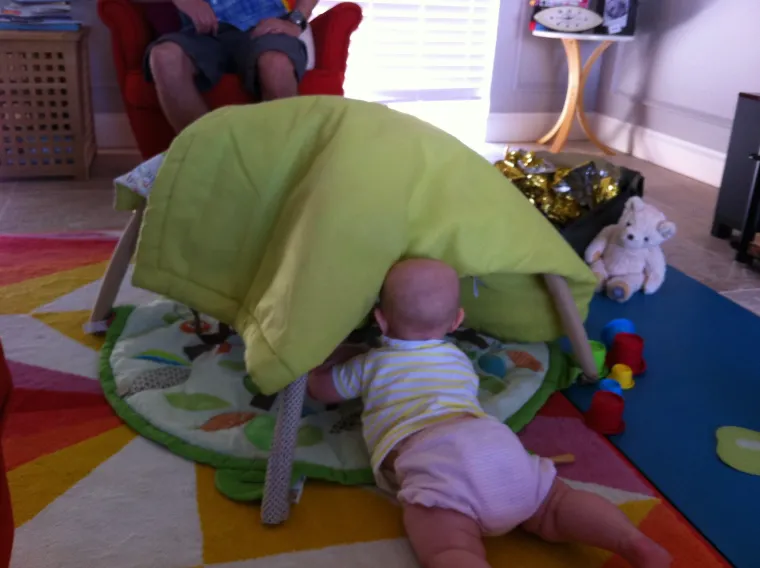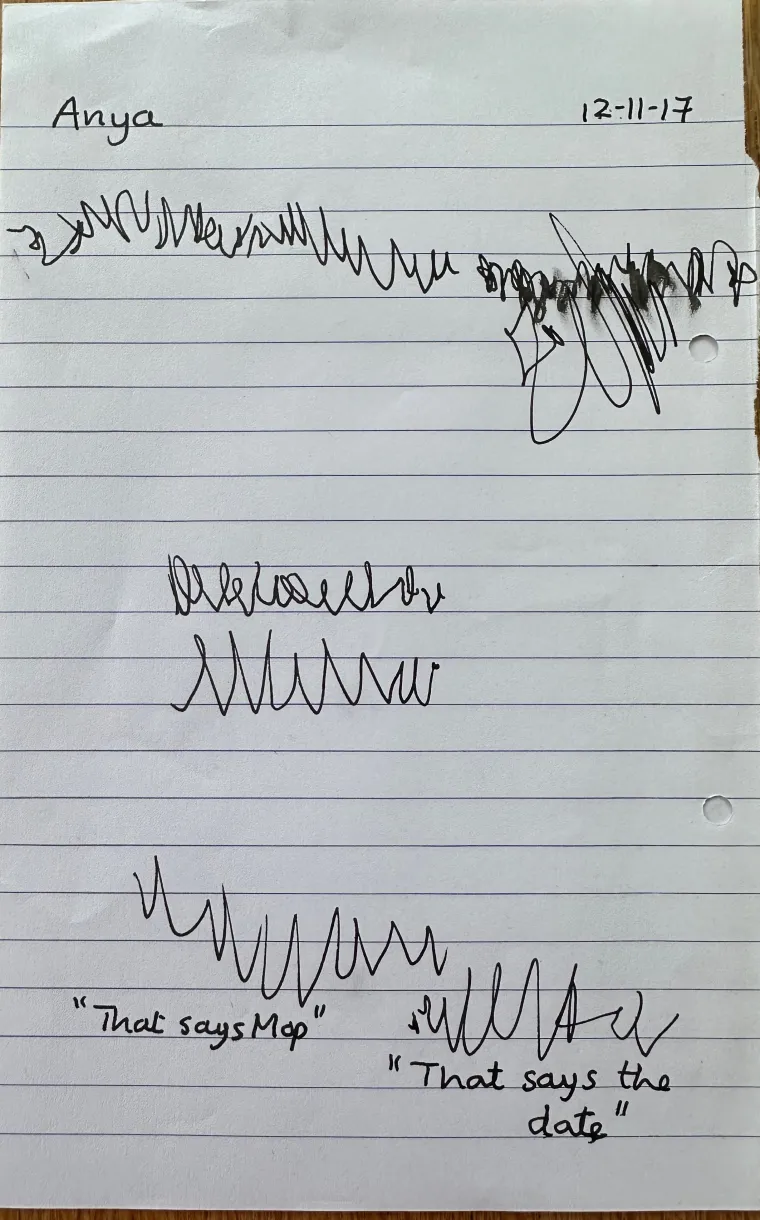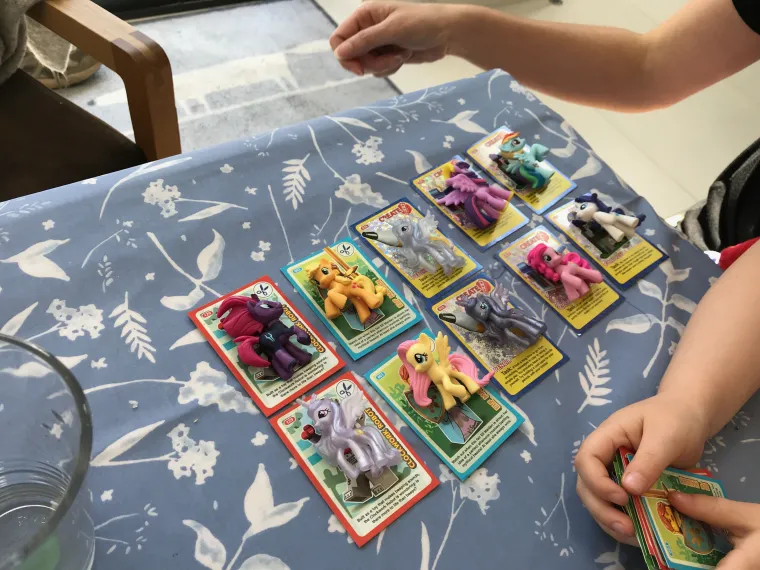Anya's Explorations of Repeated Patterns or Schemas
A Case Study - by Dr Cath Arnold
My name is Cath, I am now semi-retired after working in the early years sector for almost 50 years. I began working at the Pen Green Nursery in 1988 after working in private provision for about 12 years. I had had very little in-service training or professional development during those 12 years. However, I had always been intrigued by what children did with what we offered them. So, when I was presented with the idea that children pursue biological patterns of action (schemas), this made a great deal of sense to me. I began researching to learn more from the children and their actions.
Having focussed on Anya’s younger brother, Rhys, in my blog, I am now going to focus on Anya’s early explorations of schemas or repeated patterns of action. Anya and Rhys were born in Australia and, as grandparents, we were fortunate to visit 4 times, and two of those visits for 7 weeks. We also had the benefit of weekly Facetime calls and when Anya started attending a Reggio-inspired nursery in Australia, we were included in the posts from nursery. The family returned to the UK when Anya was 2y 7m. In this case study, I present evidence of Anya’s cluster of schemas and learning.
As soon as Anya could move, she began exploring space. At 8 months, she spotted a gap and made for it, resulting in her mum having to rescue her when she got stuck. Anya was ‘containing’ her body inside the gap and physically ‘feeling’ the size of the space.



A few days later, she spotted a space in her changing table and made for that, again ‘containing’ her body in a defined gap. Her parents, noticing her interests, created opportunities for her to explore further.

Parking her vehicle at 2y 6m and announcing her intention “I’m going to park Zebra in that little gap”. This demonstrates that Anya could understand the ‘function’ of the gap in ‘containing’ her vehicle and shows her ‘thinking’. Anya was also quite active in exploring ‘lines’.

‘Lines’ contribute to a later understanding of stories, which have a beginning, middle and end; time, that has a past, present and future; and the formation of words and sentences. By the age of 3y 6m, she was co-ordinating ‘containing’ and ‘line’ patterns.
Other examples show how she co-ordinated ‘lines’ and ‘enclosures’:


These explorations contributed to Anya developing her writing, which consists of letters formed from ‘lines’ and ‘enclosures’ within our culture. At almost 3y, Anya said “I’m going to water the plants so they get really big to the sky”, indicating her thinking about vertical lines and growth as a function of watering.
There are numerous examples of Anya’s pretend writing. In the following instance, she articulated what she was representing ‘symbolically’:


Anya loves numbers – at 3y 2m, she was playing with ideas about time:
“Emma is coming at 22, Daddy is coming home at 22 two thousand…Lots of things are ‘early’ or ‘are going to happen in 10 minutes’”.
At 3y 10m Anya was interested in ages. “I asked Gareth – did you make your work call?” G “Yes at 9”. Anya thought and said “Nicole was 9 before she was 10”. “I’ll be 9 and then 10”, showing that Anya has some understanding of lived age.
Her interest in lines also led to her talking about the order of the months:
At 4y 3m “We were talking about birthdays – 2 in October. Then I mentioned November – Anya said “No birthdays” and December – Anya said “Christmas”. Her mum said “My birthday’s after Christmas”. Anya said “No, that’s January”. (Her mum’s birthday is in February). Anya knew the order of the months and also knew her mother’s birthday was not in the month after Christmas.
At 4y 8m “Anya told me there are numbers bigger than one hundred with lots of zeros. I mentioned “a million” – she said “a trillion”.” By then, Anya was at school and may have been learning the language of number. She seemed to know that a trillion was more than a million.
Anya’s interest in numbers continues. At 7y Anya asked me “What is 4 x 224?” Then she responded to her own question: “896”.
When Anya was 4y, we bought the children Velcro darts and a 3D target, to ‘feed’ their interest in ‘lines’ and ‘trajectories’. However, Anya had another idea:

Anya climbs inside the 3D shape, demonstrating her continuing interest in ‘containing’ and what fits into a space (functional dependency). Anya could judge that she would fit into that space.
Another strong interest that contributed to Anya’s understanding of ‘Number’ was ‘one to one correspondence’, which, as you can see below, is one of the ‘Counting Principles’ identified by Gelman and Gallistel. The image (below) shows an example at 4y 1m.
At 10, Anya loves stationery and to be well organised, which may come from her early explorations of space and lines.
Counting Principles (Gelman and Gallistel, 1986)
- The stable order principle (the order of the numbers is fixed)
- The one to one principle (match one number name to one object)
- The cardinal principle (the last number is the number of objects in the set)
- The order irrelevance principle (you can count in any order – left to right or right to left)
- The arrangement of the objects is irrelevant which leads to understanding ‘conservation of number’ (spread out or close together, the number is equivalent)

